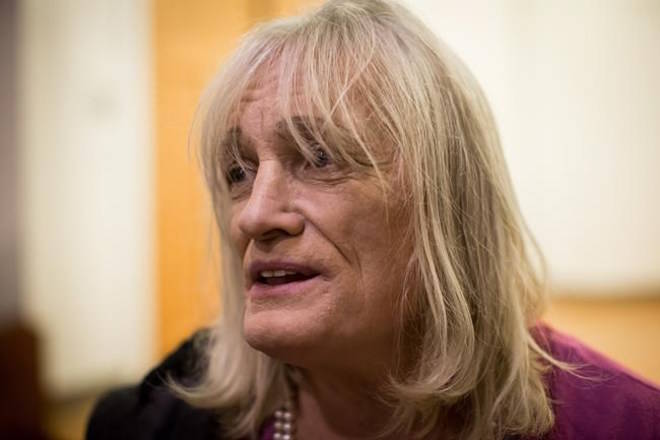More than a month had passed before Antonette Rea found the note her young friend had written her before fatally overdosing earlier this year.
“Thank you so much for saving my life,” Rea reads aloud to a crowd of 80 people packed into a community hall in the tony Vancouver neighbourhood of Kitsilano.
“I love your dancing and your singing and sorry for using all of your nail polish and art supplies,” she continues, prompting laughter from the otherwise silent audience. She smiles and puts down the note: “I called her Jilly Bean. Jilly.”
Related: Solving the drug overdose tragedy
Rea was one of more than a half-dozen drug users and first responders based in Vancouver’s Downtown Eastside who shared their stories with residents living elsewhere in the city over the past six weeks as part of a series of overdose awareness and prevention workshops.
Monday evening’s gathering in Kitsilano was the last of six events aimed at delivering stories from the front line of British Columbia’s overdose epidemic.
Jackie Wong helped facilitate the program, which was organized by the Overdose Prevention Society and Megaphone Magazine, a monthly publication sold by homeless and low-income vendors.
It is important the overdose conversation happens beyond the Downtown Eastside, in neighbourhoods where drug use is not as public, Wong said.
“I think that that’s where the conversation needs to move, … to places where people might be overdosing in private residences or quieter places because of the stigma that still is associated with them as a drug user.”
Storytellers included people who survived the residential school system or various forms of violence and discrimination, those who experienced a traumatic childhood or worked in the sex trade.
Rea is a transgender poet and playwright who has struggled with drug addiction and once worked as a prostitute in the Downtown Eastside. She said there is a good chance her friend Jilly Bean would be alive if she had overdosed in the Downtown Eastside instead of in North Burnaby, thanks to the lack of overdose-prevention training and resources outside of Vancouver’s hardest-hit neighbourhood.
The hall was completely quiet as Samona Marsh spoke about the number of people she knows who have died from an overdose, including her feather in early 2017.
“If I had one wish or magical wand, I would bring back everyone’s friends and families who passed away and make fentanyl non-existent,” said Marsh, who has lived in the Downtown Eastside for the past 25 years.
She coined the term “fentanality” to refer to a fentanyl fatality.
Related: September least deadly month for drug overdose this year: coroner
The workshops also included a training session on how to respond to an overdose, delivered by the Overdose Prevention Society
Kitsilano resident Deborah Buchanan volunteered to be shown how to administer naloxone by filling a syringe and injecting it into the leg of a stuffed toy gorilla.
“I’m so happy I learned,” Buchanan said afterwards. “I need to know how to do this and help someone.
“My son was involved in drugs, my middle son, and it kind of tore me apart, because I always thought, ‘I’m going to see you die one day and I don’t want to see that.’ “
She said what she found most inspiring was hearing from the storytellers.
Frederick Williams, a responder with the overdose prevention group, led the training session.
He said it’s important that these events happen outside the Downtown Eastside because has turned into a city-wide epidemic.
“It’s very important to have it come out to places like Kitsilano, Shaughnessy, all these higher-end neighbourhoods,” he said in an interview following the presentation. ”They can’t put their head in the sand like an ostrich and think it’s going to go away, because it’s not.”
Geordon Omand, The Canadian Press



